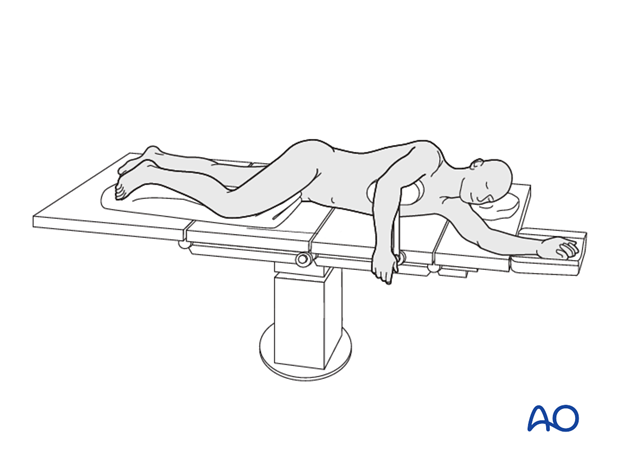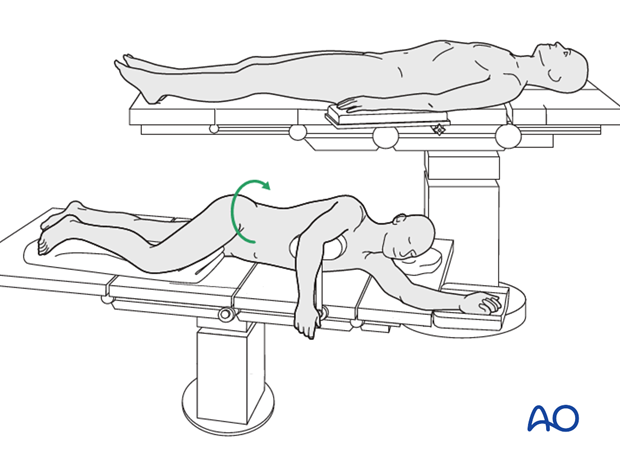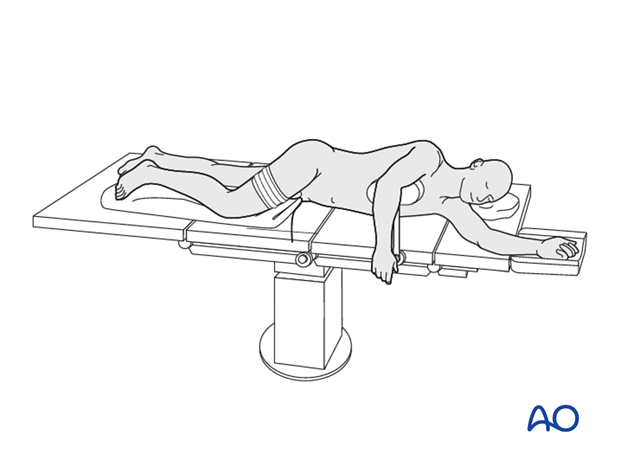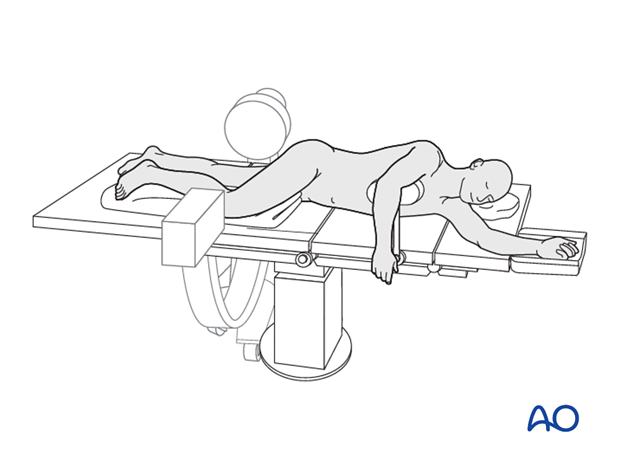Floating position
1. Positioning
This position can be used for operating on the top leg for a lateral approach or the bottom leg for a medial approach to the proximal tibia.
The nice thing about this approach is that it allows the patient to be rolled to a more supine position if a second more anterior approach is required beyond a posterior or posterolateral approach.

The patient is placed in a floating position with all bony prominences padded.
Mid operation, the patient may need to be rolled to a more supine position if anterior approaches are required.
Alternatively, by flexing the hip and externally rotating the top leg, the surgeon can approach the proximal tibia more anteriorly.

2. Tourniquet usage
The use of a tourniquet is necessary in open and direct reduction of articular fractures.
It is also helpful in open direct reduction and screw and plate fixation. It is not necessary whenever MIPO techniques are employed. It is contraindicated for the insertion of external fixator pins, in intramedullary nailing, and under most circumstances when dealing with open fractures.

3. C-arm positioning
C-arm positioning must allow for perpendicular images of the plateau, especially accounting for the posterior slope of the proximal tibia. As well a true lateral image must be easily obtainable.













